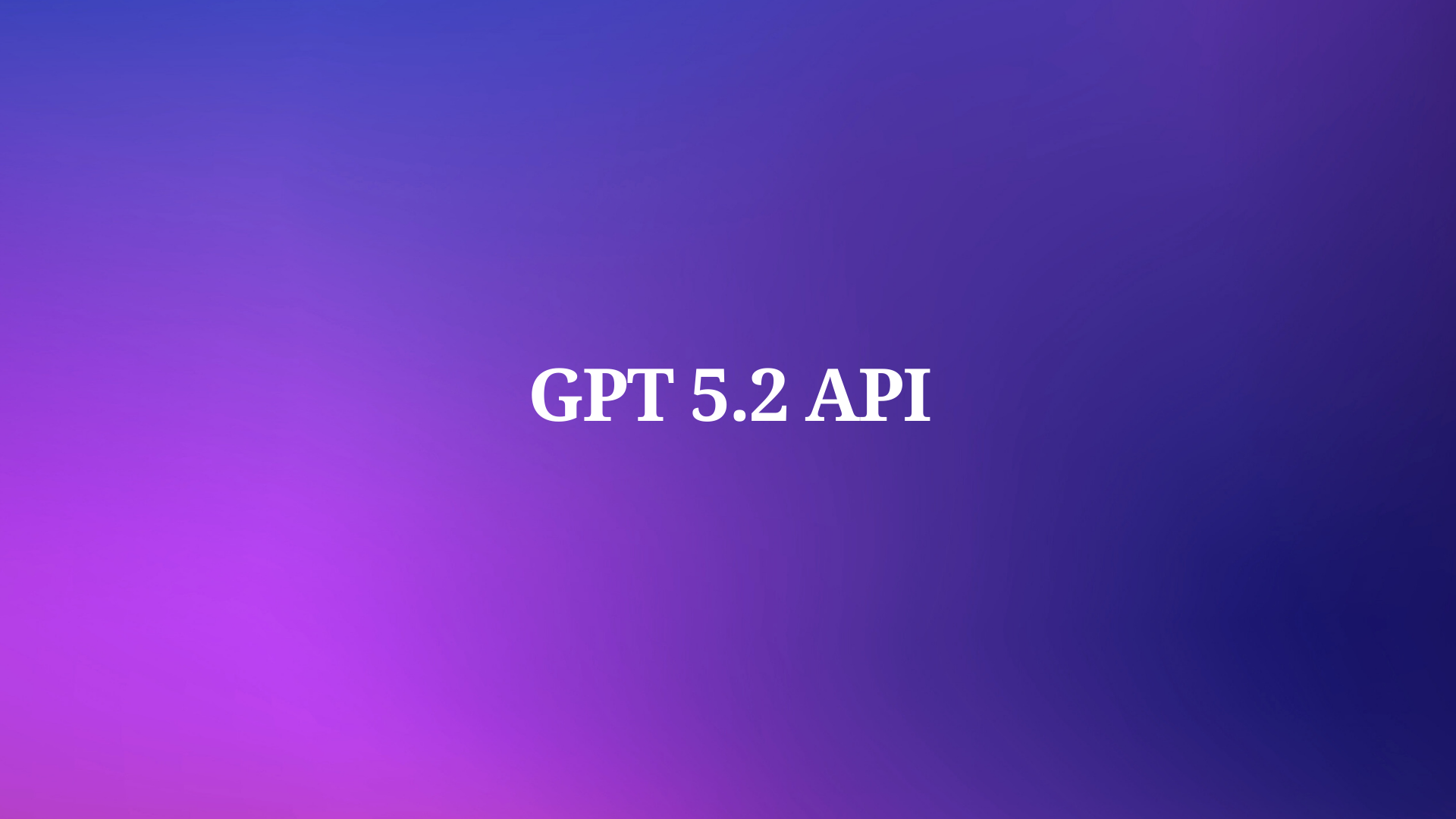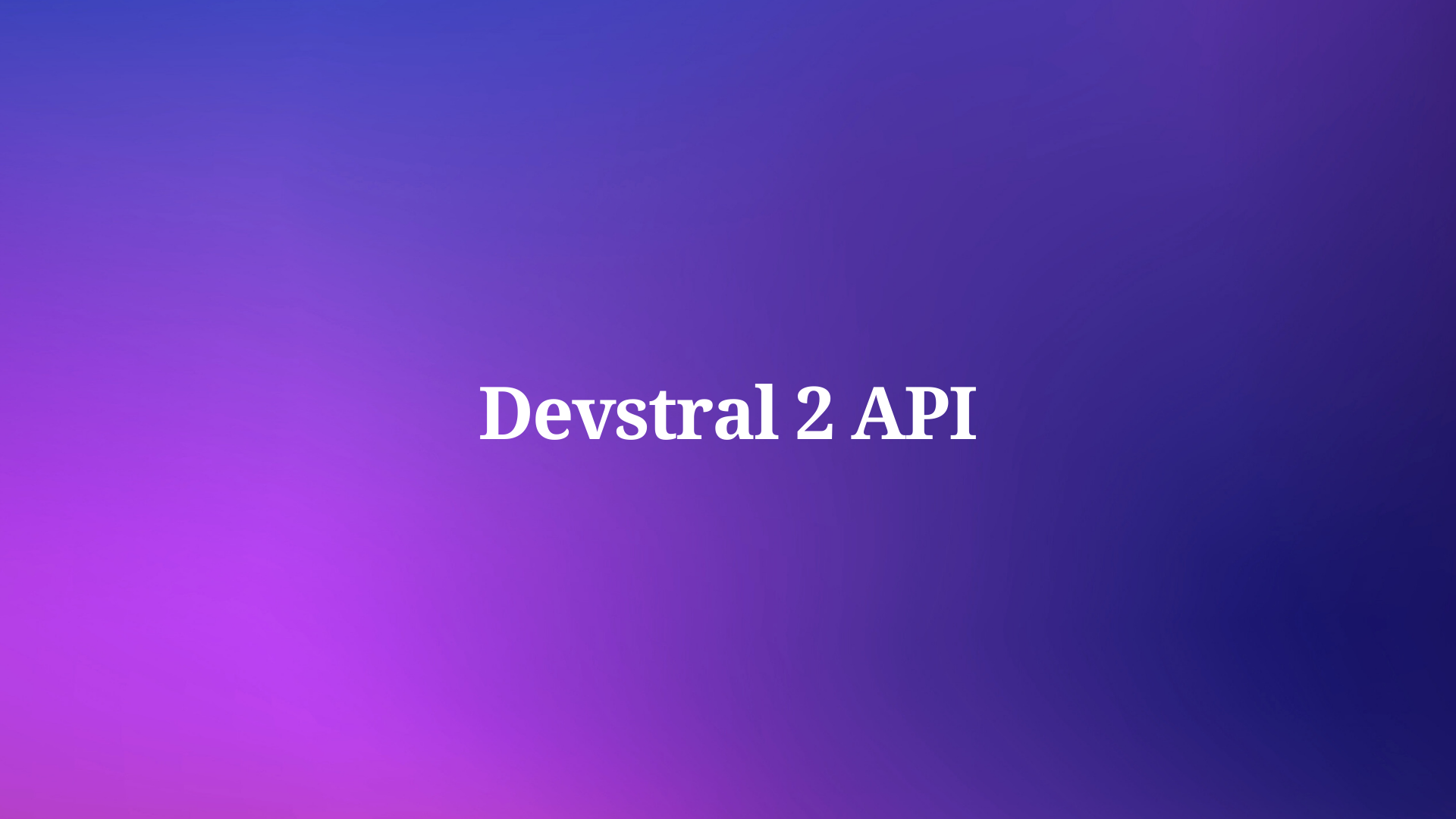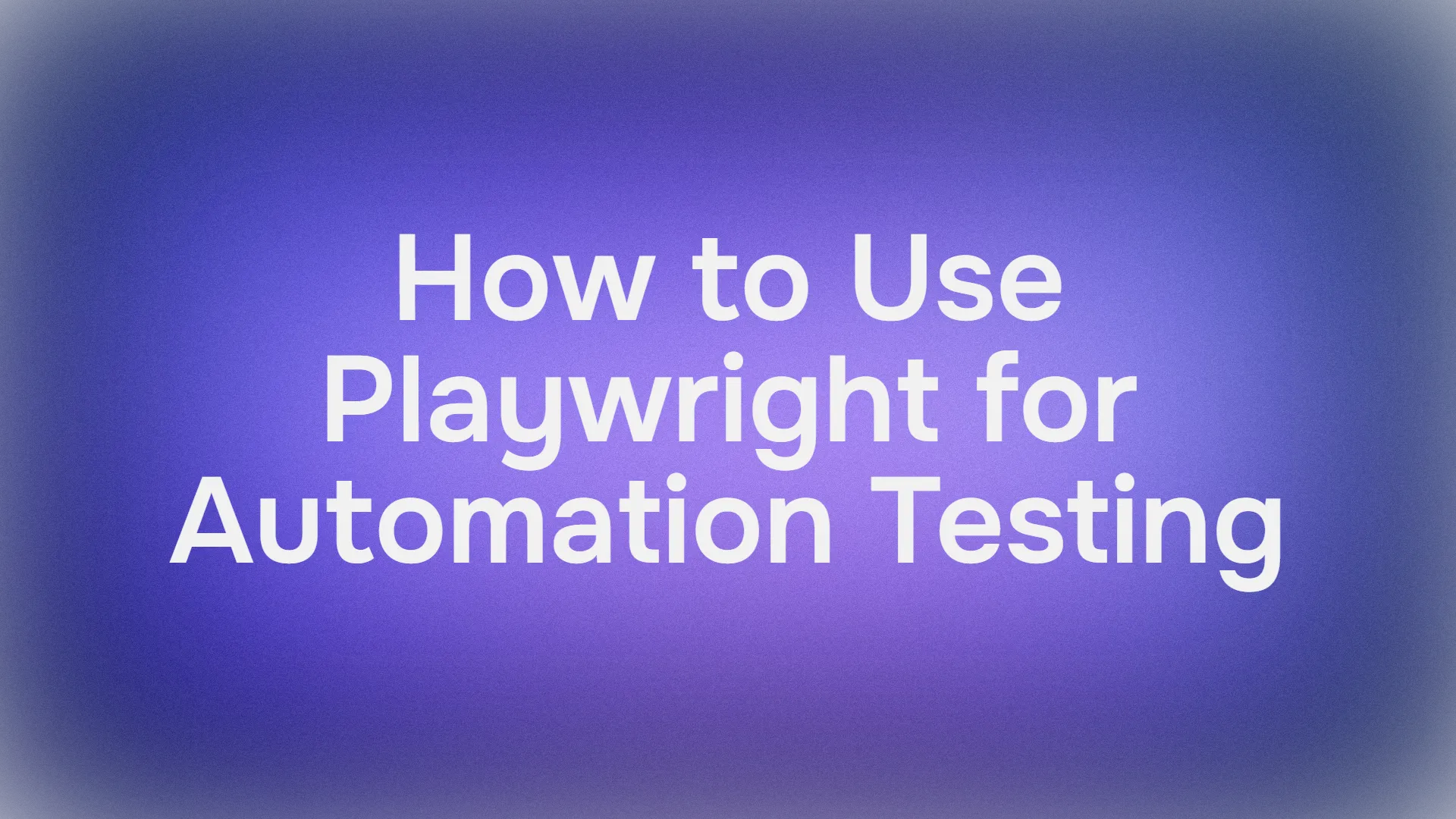In today's fast-paced development world, staying on the same page is more challenging than ever. When APIs evolve, documentation shifts or data imports occur, delays in communication can derail projects, leading to delays, bugs, and costly rework. Enter Apidog's Notification—a powerful tool designed to keep every teammate aligned and ensure that critical updates are shared in real time.
The Developer Pain Point: Staying Synchronized in a Dynamic Environment
Modern development environments are dynamic. Consider these common scenarios:
- API changes are implemented without immediately informing the testing team, resulting in failed builds and frantic troubleshooting.
- Documentation updates go unnoticed by the developer working on a related feature, leading to inconsistencies that cost valuable time.
- Data imports or schema modifications trigger confusion across different departments, making collaboration more challenging than it needs to be.
These issues are all too common in modern, agile environments. The lack of a centralized, real-time notification system means that critical updates might slip through the cracks, impacting productivity and quality.
Apidog Notification: Your Real-Time Collaboration Ally
Apidog Notification is designed to solve these exact problems. It provides a robust solution to keep your team informed and aligned by sending notifications in real time when key events occur, such as:
- Endpoint Changed
- Schema Changed
- Document Changed
- Data Import
- Response Component Changed
- Sprint Branch Changed
- API Version Changed
- Security Scheme Changed
By integrating with popular platforms like Slack, Webhook, Jenkins and emails, Apidog ensures that every team member receives the update they need, wherever they are.
Key Benefits of Apidog Notification
- Real-Time Communication: Immediate alerts prevent miscommunication and ensure that everyone is working with the latest information.
- Seamless Integrations: Whether your team uses Slack for daily chats, Webhooks for custom HTTP notifications, or Jenkins for continuous integration, Apidog Notification fits right in.
- Enhanced Collaboration: By automating notifications for critical changes, teams can focus on their work without the constant back-and-forth of manual updates.
Real-World Scenarios for Using Apidog Notifications
1. API Development and Testing
Imagine your API development team has just updated an endpoint. With Apidog Notification integrated into Slack, the update is instantly communicated to all relevant channels. Testers receive an alert, ensuring they can immediately verify the change and run regression tests. This rapid feedback loop reduces downtime and prevents last-minute surprises during deployment.
2. Continuous Integration with Jenkins
For teams that rely on Jenkins for automated builds, Apidog Notification is a game-changer. When a schema change or data import occurs, a notification is sent directly to Jenkins via its Generic Webhook Trigger. This automatic trigger initiates a build and runs integration tests, catching potential issues before they impact production.
3. Monitoring within Self-Hosted Services via Webhooks
If your infrastructure includes custom self-hosted HTTP servers, Apidog’s Webhook integration ensures that every significant change is reported. For instance, when a critical update happens, your server receives a notification with all the details. This allows system administrators to act swiftly, maintaining system stability and security.
Get Started with Apidog Notification
Apidog’s Notifications feature allows real-time integration with third-party platforms (Slack, Webhook, Jenkins, email) to send alerts when specific project events occur. (Pro tip: Only project administrators can configure these settings.)
1. Integrating Apidog Notification with Slack
Integrating Apidog notification with Slack allows you to send notifications to a Slack channel when events like endpoint changes or data imports.
Step 1: Configure Slack Incoming Webhook
1. Open Slack Channel Details:
- Navigate to your Slack workspace and open the channel where notifications should be sent.
- Click the "⋮" (More) icon at the top-right corner and select Open channel details.

2. Add Incoming WebHooks:
- Go to Integrations > Apps in the channel menu. Click on "Add an App".

- Search for "Incoming WebHooks" and install it.

3. Generate Webhook URL:
- After installation, click "View" next to "Incoming WebHooks".

- Click on "Configuration".

- On the configuration page, click "Add to Slack".

- Select the target channel and click "Add Incoming WebHooks Integration".

- Copy the generated Webhook URL (e.g.,
https://hooks.slack.com/services/XXXXX).

Step 2: Create a notification event in Apidog
1. Create a new notification target
- On the Apidog project page, go to Settings > Notifications > Notification Targets.
- Click "+ New" at the top right.
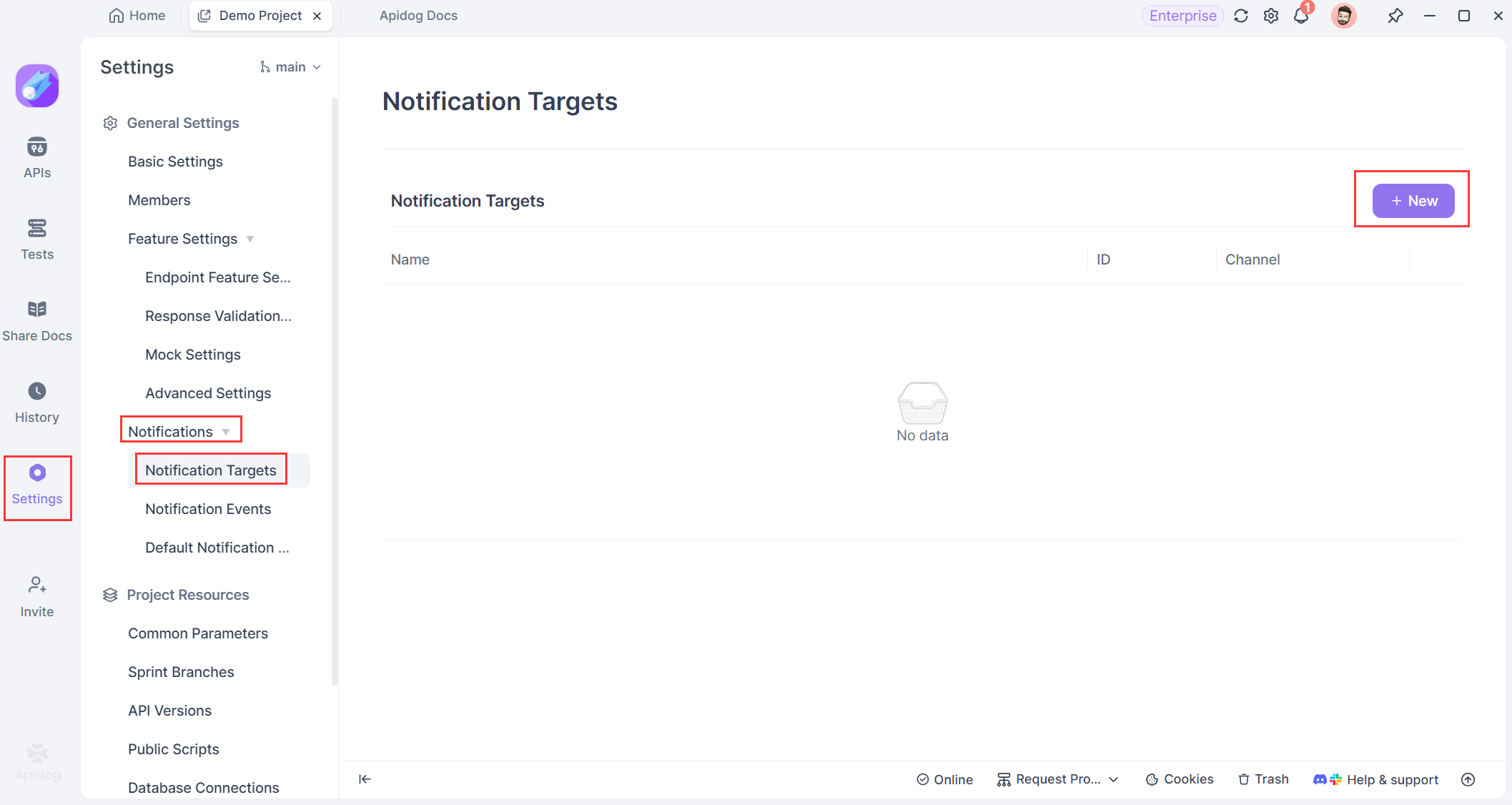
- Fill in the following information:
- Notification Target Name: Enter a descriptive name (e.g., "Slack API Changes").
- Channel: Choose Slack.
- Service URL: Paste the copied Webhook URL.
- Click Save.
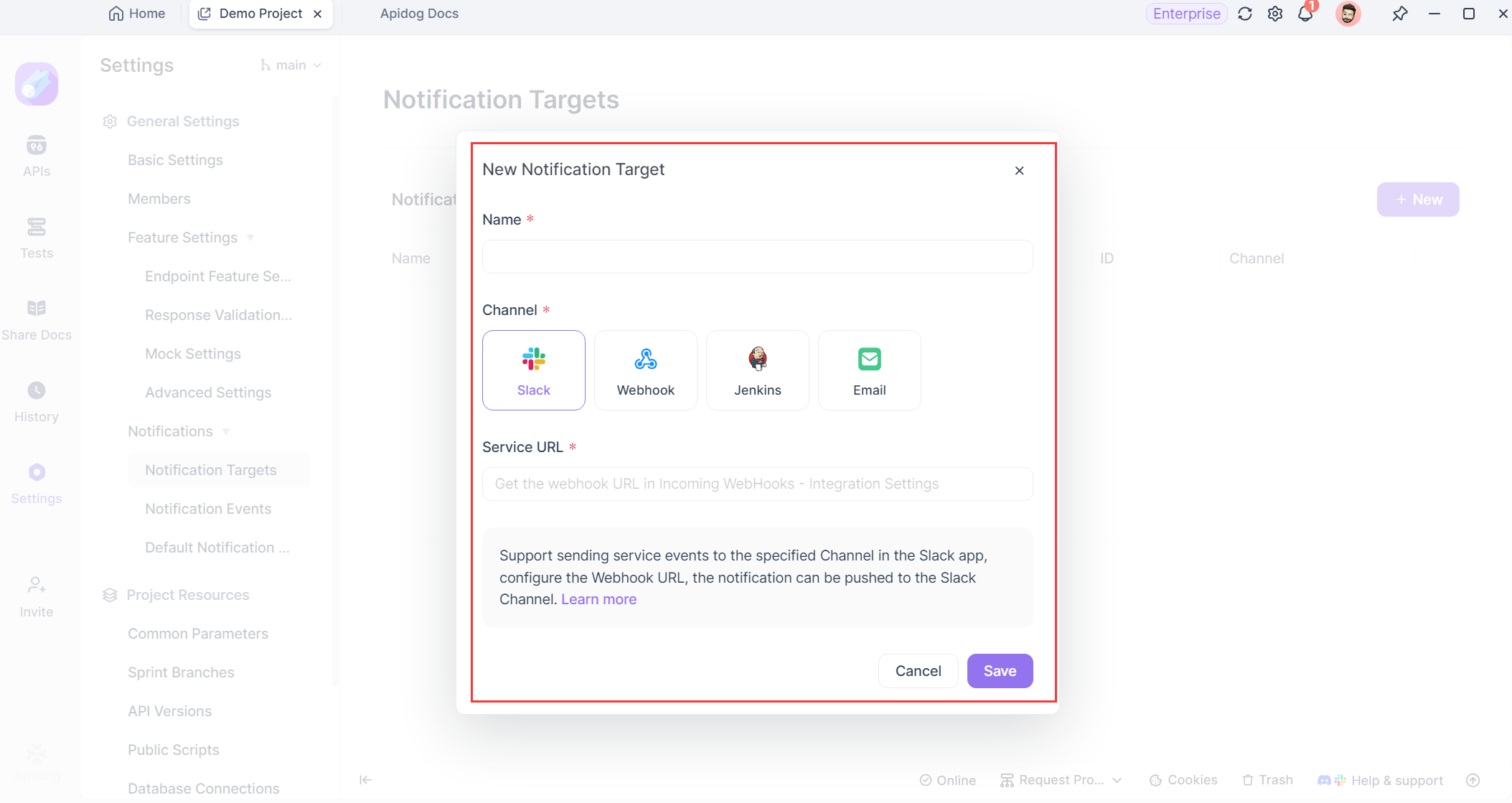
2. Create a new notification event
- Go to Settings > Notifications > Notification Events.
- Click "+ New" at the top right.
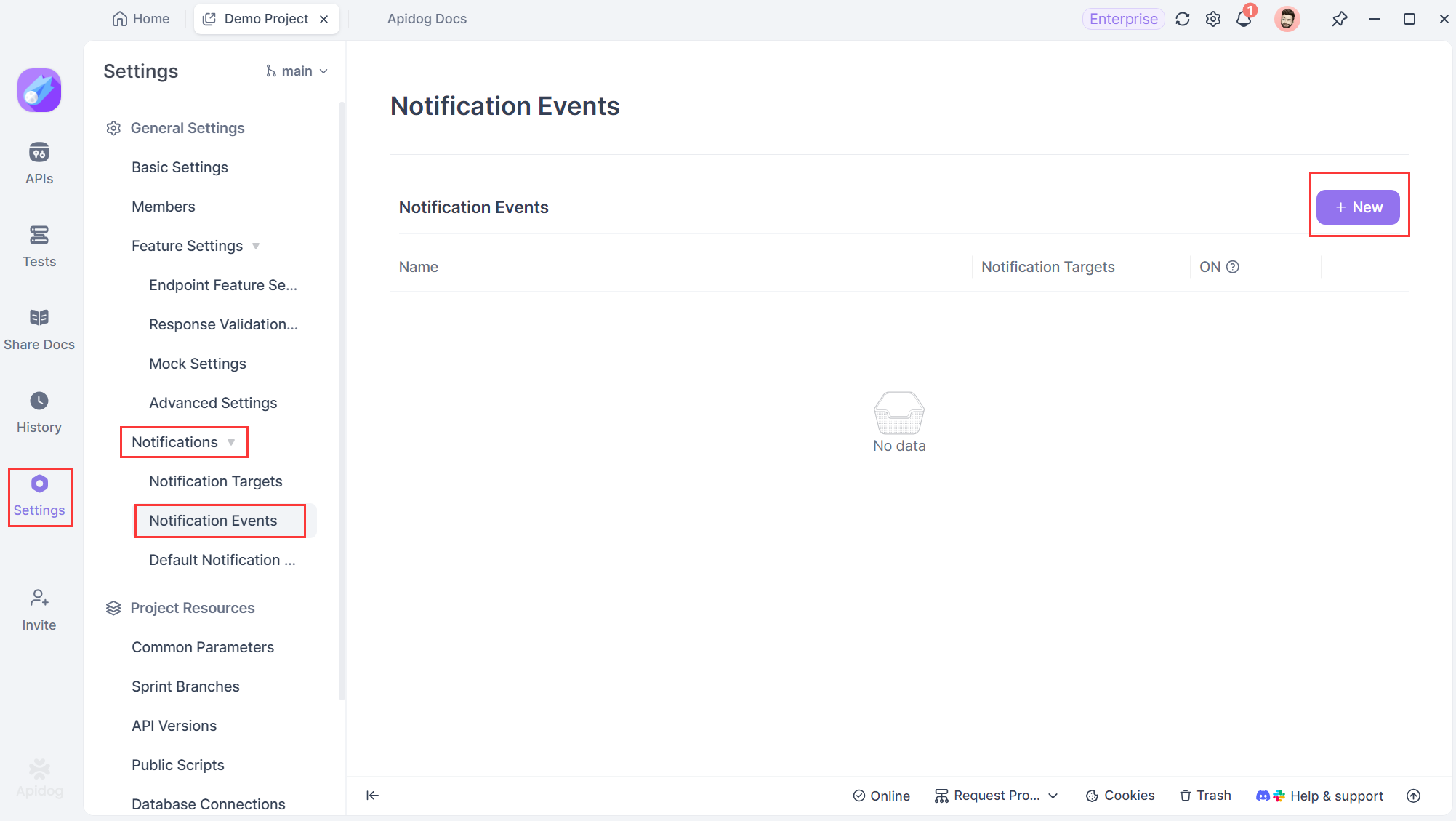
- Fill in the following information:
- Notification Event Name: Enter a descriptive name (e.g., "Endpoint Changes").
- Trigger Event: Choose an event that would trigger the notification, such as endpoint changed and so on.
- Notification Targets: Choose the notification target you just created.
- Click Save.
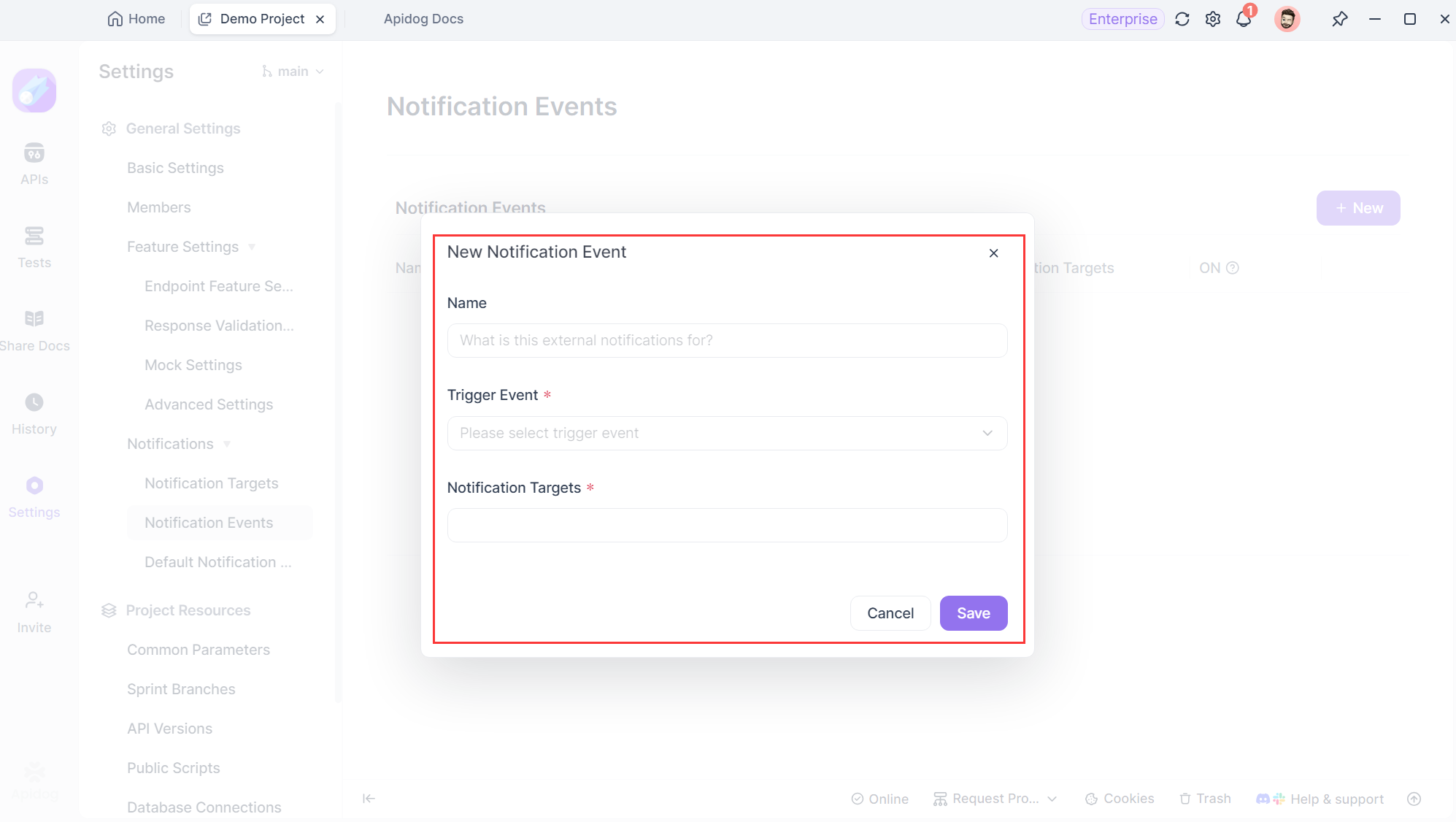
If everything goes well, notifications will appear in the Slack channel when selected events occur.

2. Integrating Apidog Notification with Webhook
Project administrators can integrate their self-hosted HTTP server with Apidog's notification system. This setup allows them to receive real-time alerts on their server whenever there are API changes, document updates, or completed automation tests. Here is how:
Prerequisite:
Make sure your self-hosted HTTP server is configured to receive POST requests. Optionally, enable HMAC SHA1 signature verification for added security.
Step 1: Create a new notification target
- On the Apidog project page, go to Settings > Notifications > Notification Targets.
- Click "+ New" at the top right.
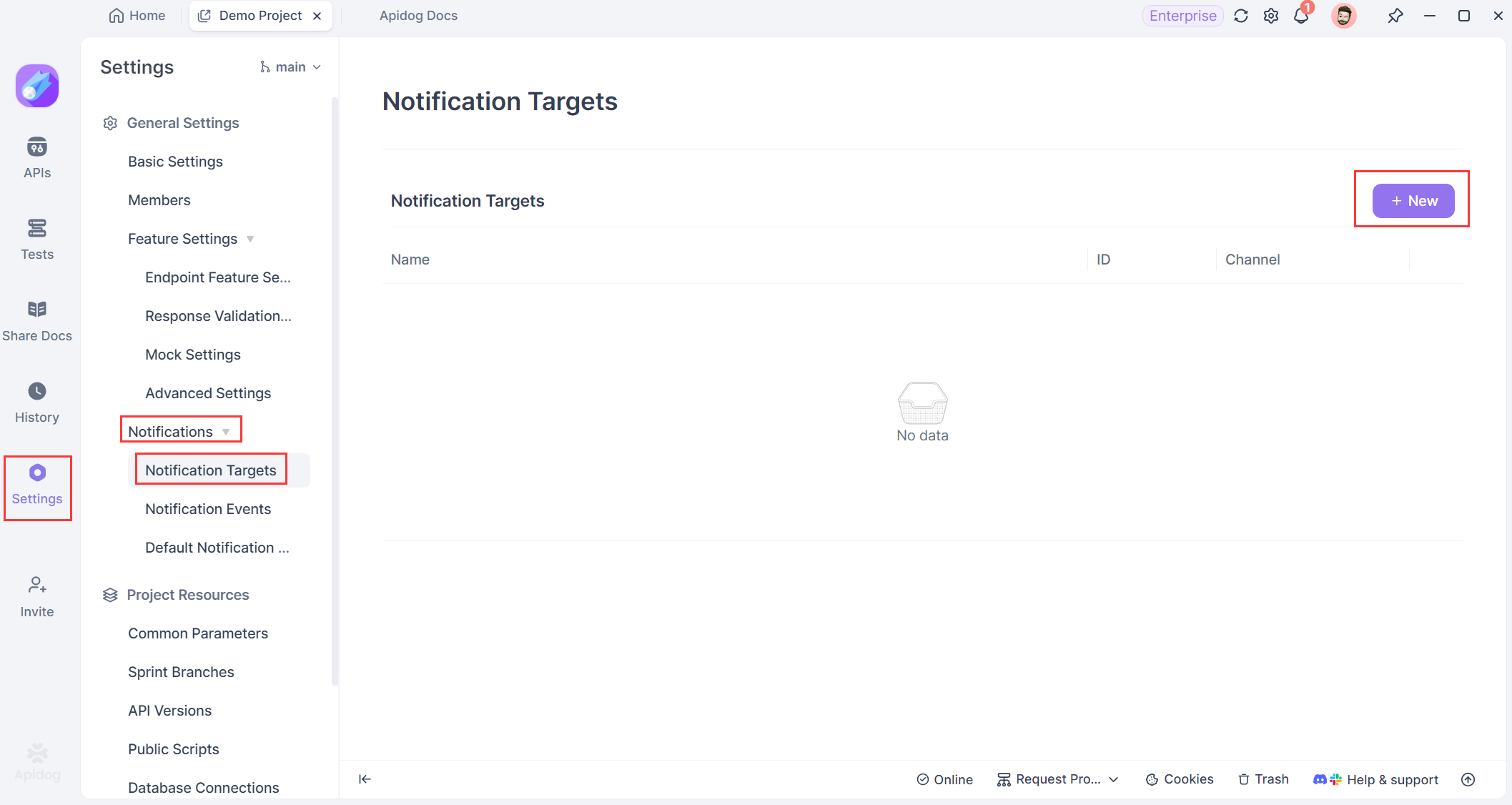
- Fill in the following information:
- Notification Target Name: Enter a descriptive name.
- Channel: Choose Webhook.
- Service URL: the URL where HTTP Server receives request.
- Signature Key
- Click Save.
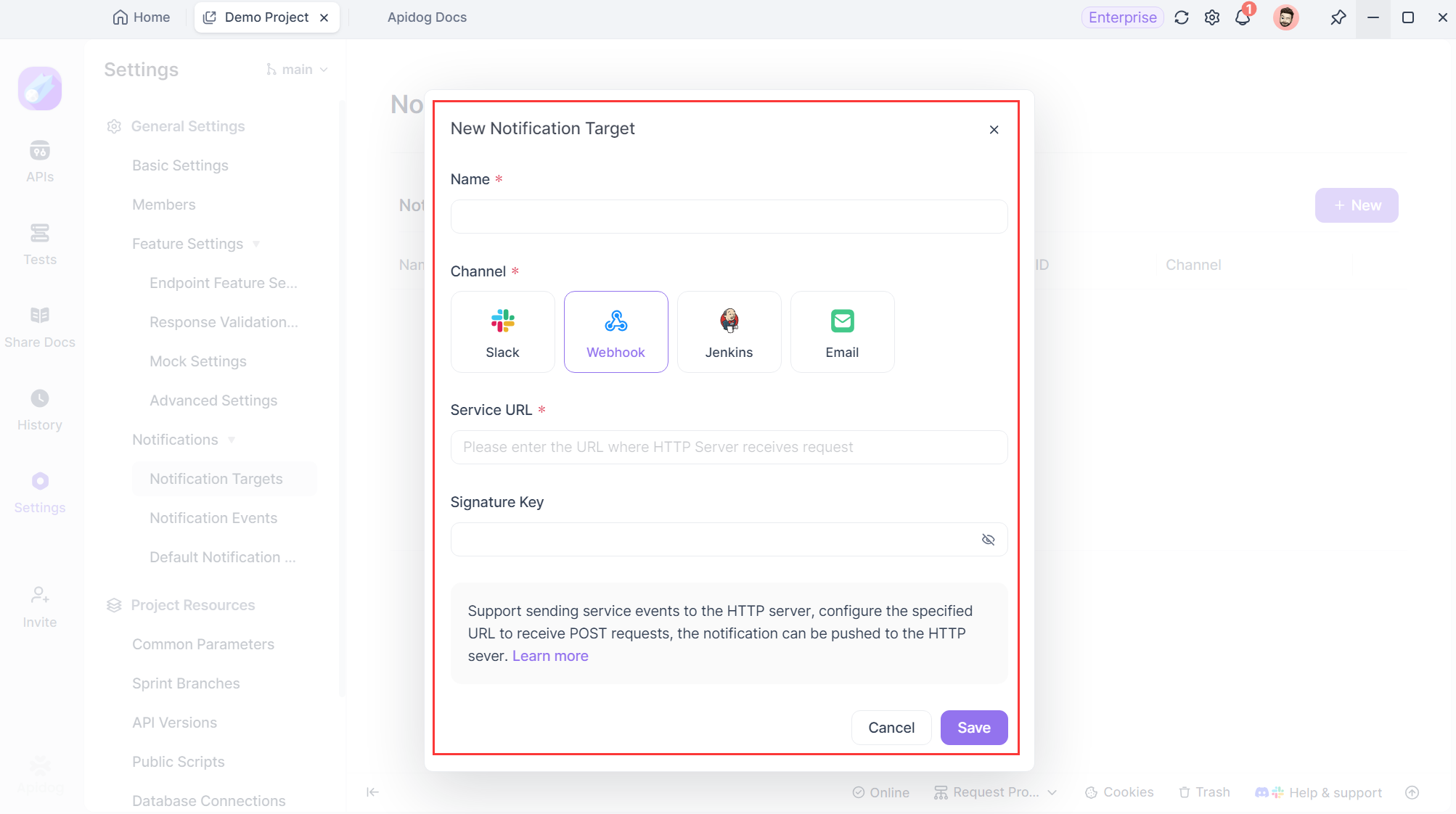
Step 2. Create a new notification event
- Go to Settings > Notifications > Notification Events.
- Click "+ New" at the top right.

- Fill in the following information:
- Notification Event Name: Enter a descriptive name.
- Trigger Event: Choose an event that would trigger the notification, such as endpoint changed and so on.
- Notification Targets: Choose the notification target you just created.
- Click Save.

Your server will now receive notifications for the selected events.
2. Integrating Apidog Notification with Jenkins
Integrating Apidog Notification with Jenkins allows you to trigger Jenkins builds automatically when events like automation testing complete.
Step 1: Configure Jenkins Webhook
1. Install the Generic Webhook Trigger Plugin:
- In Jenkins, go to Manage Jenkins > Plugins, search for the plugin, and install it.
2. Create a Jenkins Job:
- On the Jenkins dashboard, create a New Item (e.g., "Apidog Build").

- Under Build Triggers configuration, enable "Generic Webhook Trigger".
3. Generate Webhook URL:
- The Webhook URL follows this format:
http://<JENKINS_SERVER_URL>/generic-webhook-trigger/invoke.

- Fill the
Tokenfield (e.g.,APIDOG_TOKEN).

Step 2: Create a new notification target
- On the Apidog project page, go to Settings > Notifications > Notification Targets.
- Click "+ New" at the top right.

- Fill in the following information:
- Notification Target Name: Enter a descriptive name.
- Channel: Choose Jenkins.
- Service URL: The webhook URL in Jenkins Generic Webhook Trigger plugin.
- Signature Token: Generated using the Signature Token and Request Body when sent.
- Click Save.
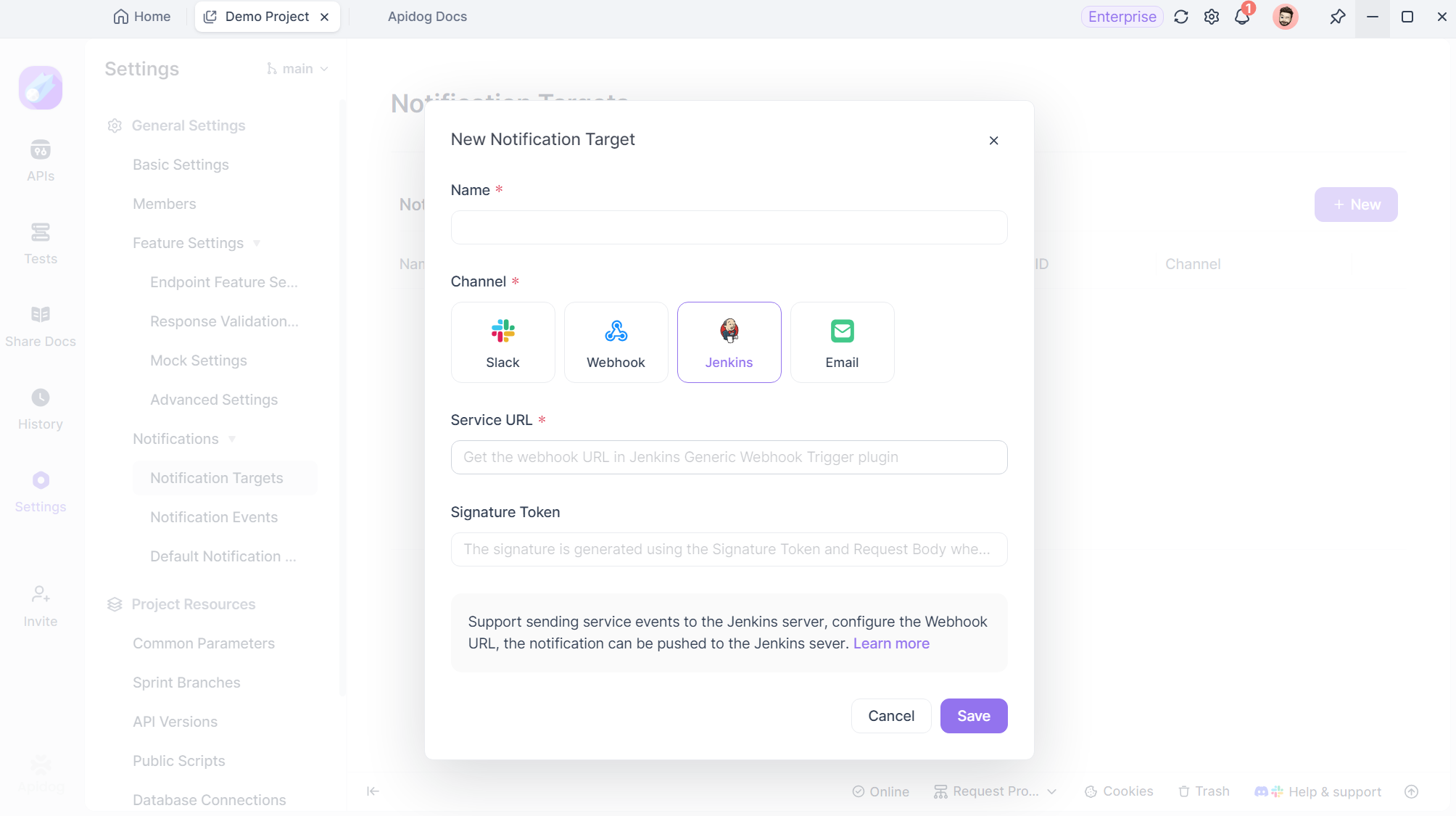
Step 3. Create a new notification event
- Go to Settings > Notifications > Notification Events.
- Click "+ New" at the top right.

- Fill in the following information:
- Notification Event Name: Enter a descriptive name.
- Trigger Event: Choose an event that would trigger the notification, such as endpoint changed and so on.
- Notification Targets: Choose the notification target you just created.
- Click Save.

Now, every time the chosen event occurs, Jenkins will trigger a build automatically, ensuring that integration tests and builds are kept up to date.
Conclusion: Elevate Your Team's Collaboration
Apidog Notification isn’t just another tool—it’s your team’s new best friend. By delivering real-time updates across your favorite channels, it ensures that every teammate, whether a developer, tester, or project manager, remains in the loop. This seamless communication not only prevents costly delays but also paves the way for faster development cycles and more reliable deployments.
Ready to keep every teammate aligned and supercharge your workflow? Try Apidog Notification today and experience the transformation in how your team collaborates and communicates.

